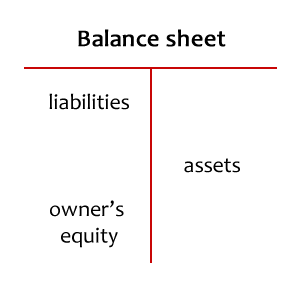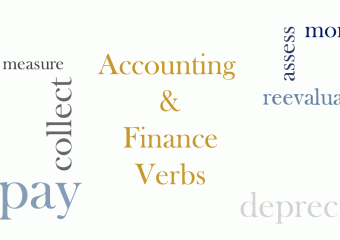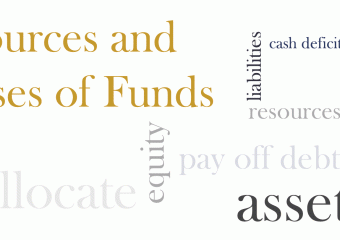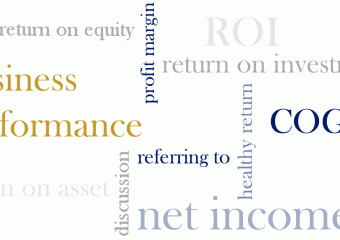Assets: Balance Sheet Components Part 1
This is part 1 of a 3 part post. To learn more, check the links below:
Liabilities: Balance Sheet Components Part 2
Owner’s Equity: Balance Sheet Components Part 3
Assets are the properties of a business that help it work and make a profit. The purpose of attracting investors or borrowing money from others is to obtain them. In the Introduction to Finance and Accounting, I introduced the accounting balance or the balance sheet equation. The balance sheet equation is:
Assets = Liabilities + Owner’s Equity

What are the main characteristics of assets?
Intrinsic value
Broadly speaking, the resources that a business owns for future benefit are known as assets. Here, we need to know a couple of terms frequently used with regards to assets. The first one is intrinsic value. There are different types of values, but we are going to mention only intrinsic value here. An intrinsic value refers to the core value of an item. The intrinsic value of an item is not lost if it is bought or sold. For example, cash and gold both have an intrinsic value. Gold can be bought and sold again and again, but its value will never be lost.
Liquidity
Now we can move on to another term: liquidity. Assets are categorized based on their liquidity. Liquidity refers to how fast and easy can an item be sold and bought. In other words, how fast it can be turned into cash. An item that can be easily bought or sold is a highly liquid one, while one that takes too long to turn into cash is known as illiquid. Cash is known to be the most liquid. Goods and buildings are less liquid than cash. Based on the degree of liquidity, assets are categorized into current and noncurrent ones. Current assets are those which are liquidable within one year.
The reason for a year being the measure of liquidity is the fiscal year. Financial information regarding business transactions are recorded and kept based on the fiscal year. At the end of every fiscal year, the profit or loss are determined, reports are made to the board of directors, and the new fiscal year begins. At every point in the fiscal year, of the company is faced with debts or needs more cash to run the business, it can use its current assets. Therefore, current assets are recorded first, followed by noncurrent ones. Noncurrent assets are those which cannot be turned into cash in less than a year. A simpler way to understand this categorization is to consider assets in relation to liabilities.
Tangible and intangible assets
As it appears form the names given, tangible assets are those visible to the eye. Lands and buildings tangible assets. Tangible assets are usually obtained for a long term and have very low liquidity. Therefore, they are considered noncurrent assets.
Intangible assets include those such as patents and brands. These assets add considerable value to the business when the company is being sold, especially if it is a well-known one. To avoid a further lengthening this post, intangible assets are introduced in a separate one. For more information refer to intangible assets.
Assets
Now that we have established what assets are and how they are categorized, we can move on to what are considered assets. As we mentioned before, assets include what a company possesses that can lead to future benefit. They include: cash, short term investments, inventory, accounts receivable, equipment, and fixed assets (buildings and lands).

Cash
Cash includes the money we have at our disposal and the amount we have in the bank. Cash is crucial to business processes since it is used to make regular business transactions. Cash deficit can occur when the money needed for these financial activities has not been foreseen. Too much cash is also considered poor financial management where the excess cash can be invested, leading to more earnings. Budget forecast enables businesses to foresee the cash flow and plan for cash deficits as well as excess cash beforehand. Liquidity ratios are used to analyze a company’s ability to pay off its debts using its assets. These ratios are:
Current Ratio = current Assets/current liabilities
Quick Ratio = current assets – (inventory, advance payments, orders)/current liabilities
Short term investments
In cases where the business has more cash than it needs, but also needs to keep it liquidable, it makes short term investments. These investments are made for a return in less than a year.
Accounts receivable (customers receivable)
Since purchases and sales occur regularly and frequently in businesses, the records are kept in corresponding accounts. When an order has been made, the amount of the sales is recorded in the accounts receivable, because sometimes the purchase is not paid in cash. Usually an advance payment is made at the beginning of the purchase, and the rest is paid upon product delivery or other conditions mentioned in the contract or invoice.
Accounts receivable indicates the amount of money that is going to be received in the future (less than a year). Usually there is a procedure that determines how the collection has to be made. The procedure may include sales staff, accounting staff, or in cases where collection seems unlikely, lawyers. In the case that the collection period has been too long and the money is unlikely to be received, the amount is moved from accounts receivable to expenses. It is as if you paid money and did not get anything in return.
Account receivable collection period = account receivable average/daily sales
Advance and L/C
These include advance payments received from other people or businesses for every order as well as letters of credit.
Inventory
Inventory refers to the products in storage. In manufacturing and production businesses, raw materials are processed and turned into products. Products can be easily sold and turned into cash, therefore, they are considered current assets. The number or amount of product in storage is recorded as inventory. While it may sound good, too many stored products is not a good sign. The reason is because we have limited resources. These resources are used to buy equipment, raw materials, and hire the workforce to produce the goods. At this point, money has been spent, and goods have to be sold so that the money can get back into the system and allow the cycle to go on. Too many goods in storage means less money in the system. To better analyze this aspect, two ratios are used in financial statement analysis:
Inventory turnover = COGS/average inventory (COGS: cost of goods sold)
Inventory age average = 365/ inventory turnover

Fixed Assets
Every business needs equipment to perform its business activities. Since the equipment help produce goods and therefore earn possible profit, they are considered assets. Machinery are one type of equipment. Based on the type of business, the equipment could vary. Buildings and lands are also considered fixed assets. Fixed assets are purchased for long-term use. Thus, they are highly unlikely to be sold for cash. A business, especially one that needs to establish itself physically, needs lands and buildings.
Both lands and building have intrinsic value, and last for a long time. Therefore, they are considered assets. However, they are much less liquidable than the goods in storage or the accounts receivable. Besides, no business person in their right minds would consider selling the place where they run their business. Therefore, that business person always makes sure that they have enough cash for their cash flow, reasonable inventory turnover, rational accounts receivable period, and an amount of debt they can clear without having to valuate their fixed assets.
Long term investments
Businesses make long-term investments with the hope to earn more in the future. These investments are highly illiquid. Stocks and bonds are another way for a business to earn more money. Real estate may also be considered one. It is important to keep in mind that money earned from these investments are different from the earnings made from the operational activities of the business. These earnings do not reflect the efficiency and the return of the business. They are solely ways to make use of excess funds instead of leaving them in the current assets. Investments can also be directed to the business itself. Further business developments can be funded by the business itself.

As I mentioned earlier, assets are obtained in order to generate future benefit. For that to happen, business has to make sales. The amount of sales to the amount of assets is a ratio that indicated the asset turnover. It shows how much money is being produced using properties. In a comparison between two companies having the same amount of assets, the one that has more sales shows it is making better use of the investments made on the company.
Total asset Turnover= Sales/Total Assets





